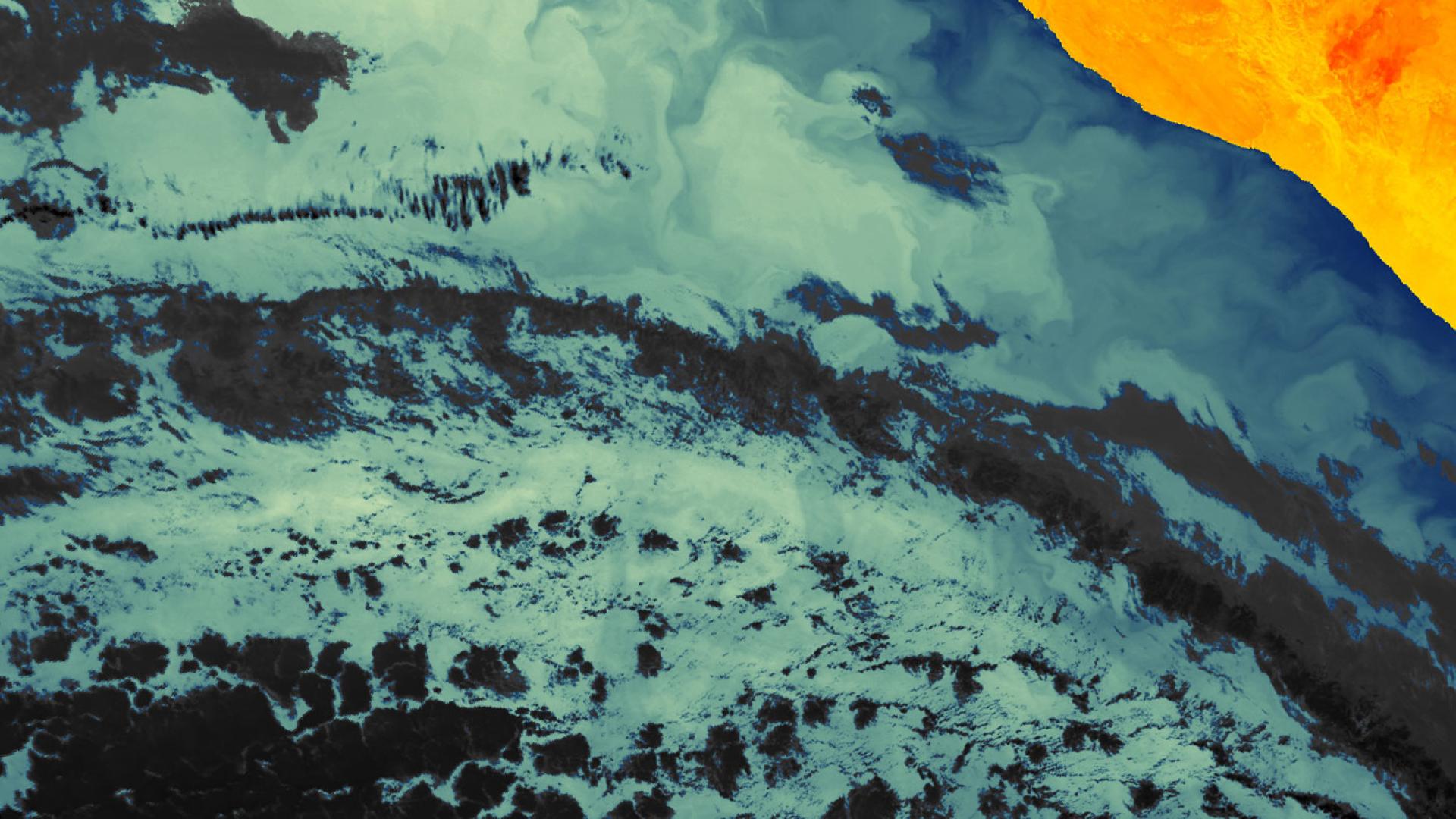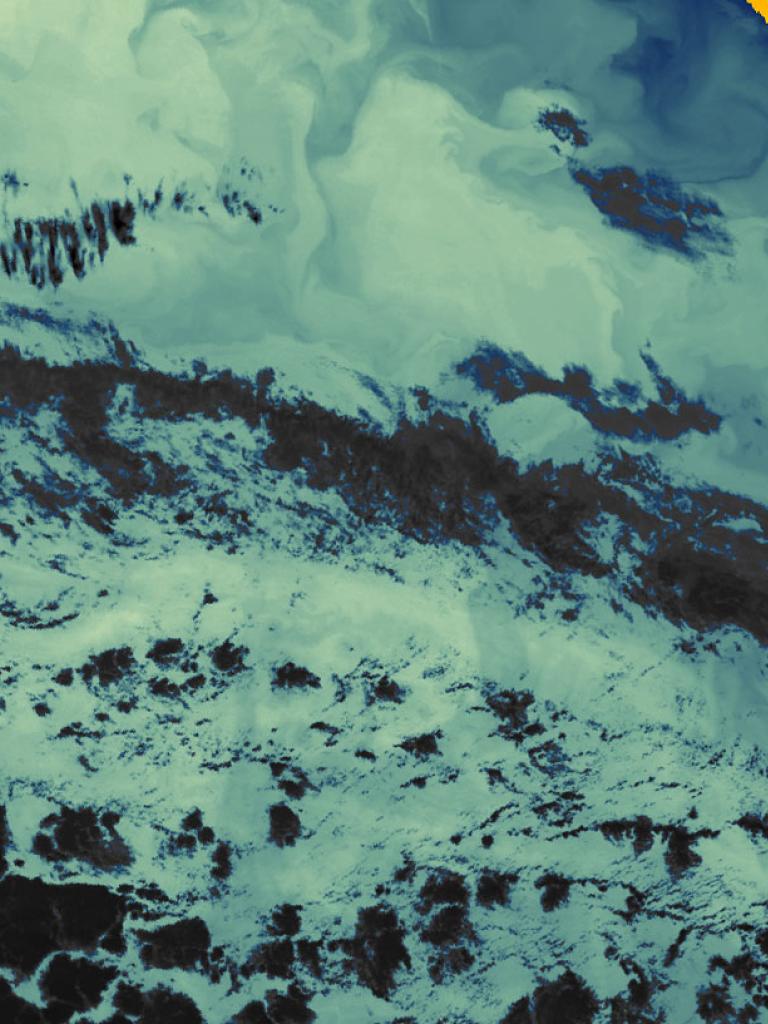12 August 2025
30 November 2021
Sea Surface and sea-Ice Surface Temperature (SST and sea-IST) are key essential climate variables to understand climate evolution and essential inputs to numerical weather prediction systems. Space observations of SST and sea-IST from the Sentinel-3 SLSTR constellation represent a major asset because they provide global coverage, with a better than daily revisit frequency.
EUMETSAT delivers high-quality surface temperature data over ocean and sea ice. In particular, in the frame of Copernicus, EUMETSAT distributes well-calibrated, high-quality Sentinel-3 marine products, including SST (and sea-IST in development) derived from the Sea and Land Surface Temperature Radiometer (SLSTR). EUMETSAT will also operate the global ocean products for the future High-Priority Candidate Mission (HPCM) Copernicus Imaging Microwave Radiometer (CIMR) mission. In addition, EUMETSAT also provide SST and IST products from its current EPS and MSG programmes (AVHRR/EPS, IASI/EPS, SEVIRI/MSG) and future programmes (FCI/MTG, IRS/MTG, IASI-NG/EPS-SG, MetImage/EPS-SG), through the EUMETSAT Ocean and Sea-ice Satellite Application Facility (OSI SAF). They are all complementary components of the marine observing system benefiting from the co-development of products with SLSTR. These data all contribute to the Copernicus Marine Data Stream (CMDS), serving operational oceanography users, including CMEMS.
EUMETSAT also manages the International GHRSST Project Office (GPO), which coordinates the activities and initiatives of the GHRSST international science team, maximising the contributions of this expert group for SST data and science.
Objectives
The Copernicus scientific service has the following objectives:
- Activity 1 — Improving Sentinel-3 SLSTR sea and sea-ice surface temperature product quality.
- Activity 2 — Improving sea and sea-ice surface temperature monitoring and Cal/Val capability and tools.
- Activity 3 — Coordinating, organising, and administrating the GHRSST Project Office, including its website and web services.
Overview
Activity 1: Improvement to Sentinel-3 SLSTR sea and sea-ice surface temperature product quality
SLSTR-retrieved SSTs, based on radiative transfer physics, respond to and represent the skin temperature of the ocean surface.
The first task is to define an improved SLSTR SST 'day-2' algorithm. This involves reviewing and publishing the current performance of SLSTR SST and defining an algorithm development plan to cover clear-sky determination, SST retrieval, quality flagging, as well as uncertainty estimation. Recent developments in knowledge of near-surface thermal variability will be included to adjust SLSTR SSTs to user required depths, and to advance SLSTR SSTs use as reference products.
SLSTR retrieval coefficients have been developed using approaches based on established practises over many years. These capabilities will be revised with new software and documentation for implementing improvements and increasing traceability and repeatability. A further task is dedicated to the exploration and testing of cloud detection and retrieval offline, compared to the existing processor at any given time.
Sea-ice surface temperatures products from SLSTR are also under development with further activities on sea-ice cloud screening and validation assessments planned. A prototype processor was developed by an earlier project.
Activity 2: Improvement to sea and sea-ice surface temperature monitoring and cal/val capability and tools
This activity involves:
- The implementation of a Multi-Mission Match-Up Database (MMDB) production system. This is a framework to produce satellite to in situ match-ups, both routinely and for reprocessed data.
- The implementation and operation of the GHRSST Central Data Discovery and Cataloguing Service (GHRSST-DDC). This includes (1) a central catalogue of all the SST products endorsed by the GHRSST-PO, accessible to all the users through a web interface and standard access protocols, and (2) an inventory metasearch service, able to federate each GHRSST data distributor search services into one single user end-point. The activities are in coordination with the GHRSST science team and the facility will be run by the GHRSST Project Office website.
Activity 3: Project Office of the Group for High Resolution Sea-Surface Temperature (GHRSST PO)





